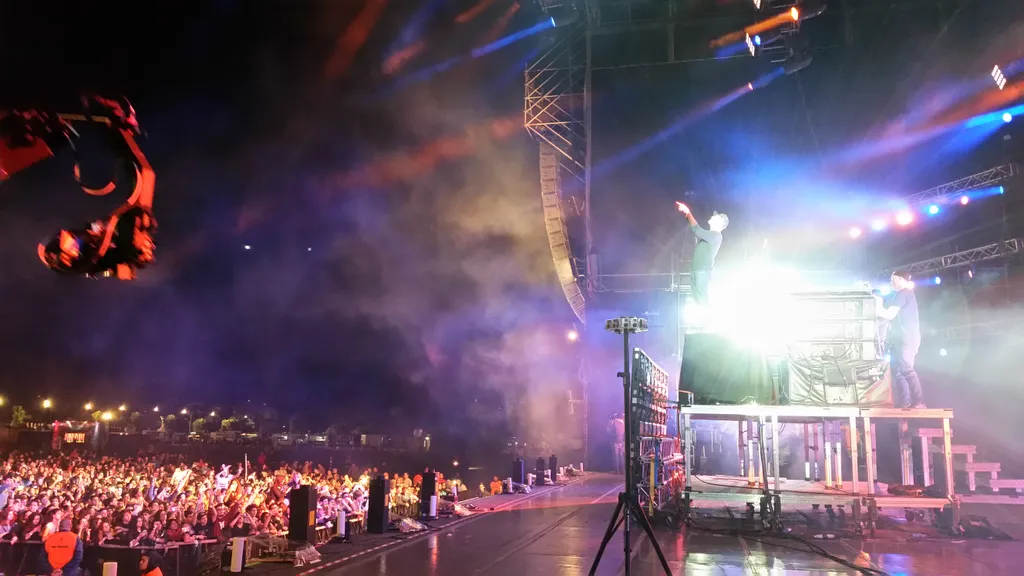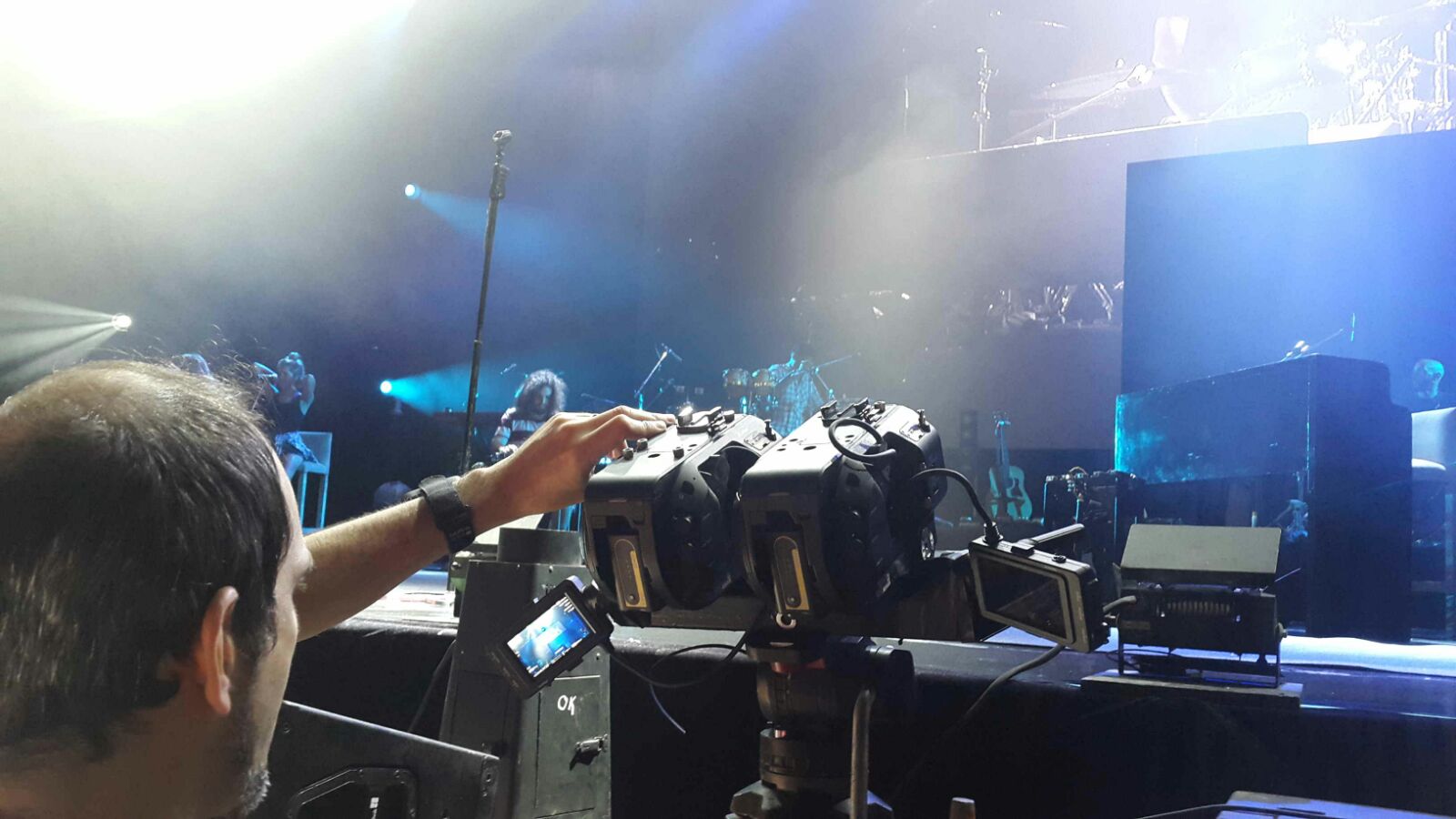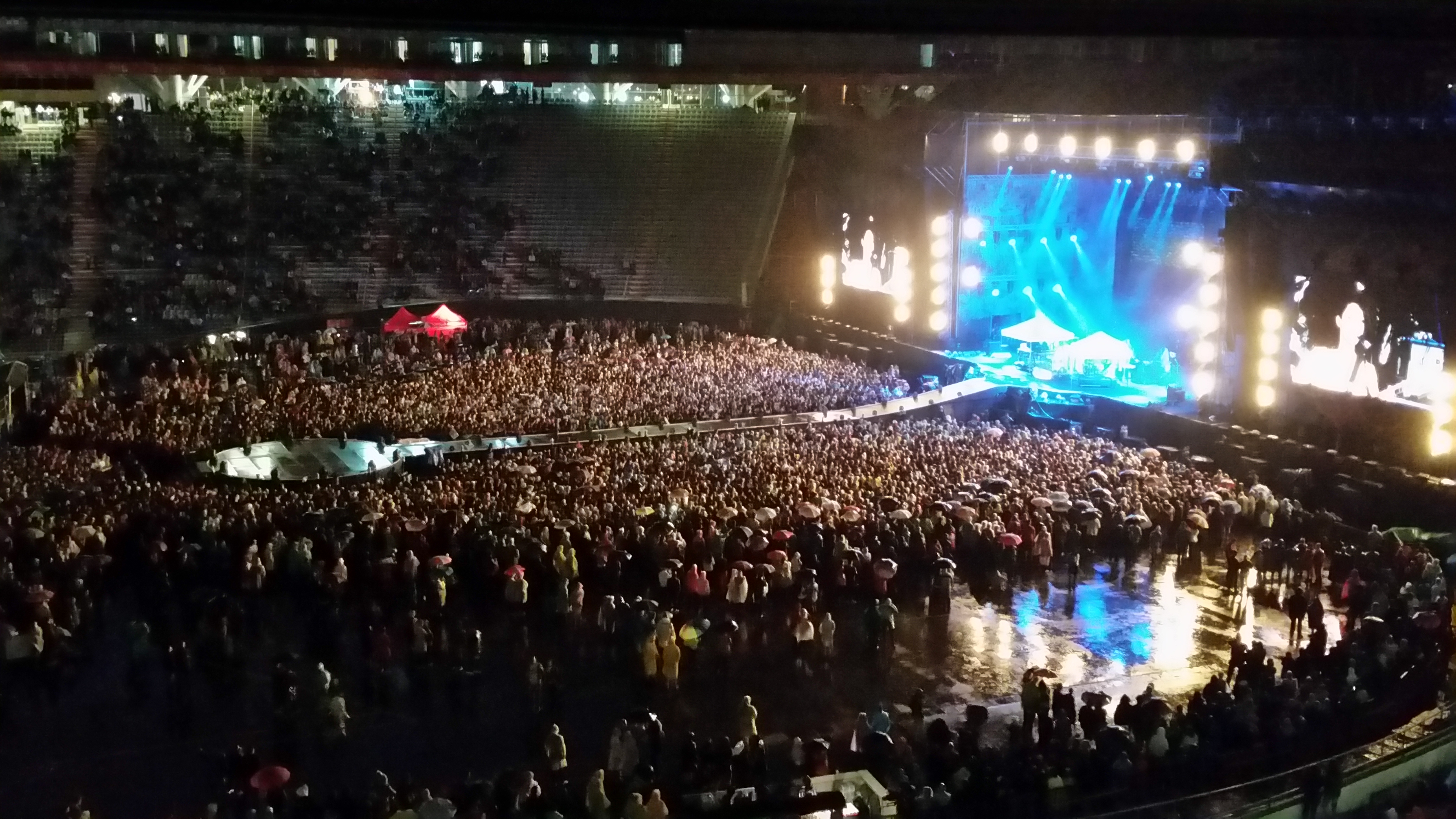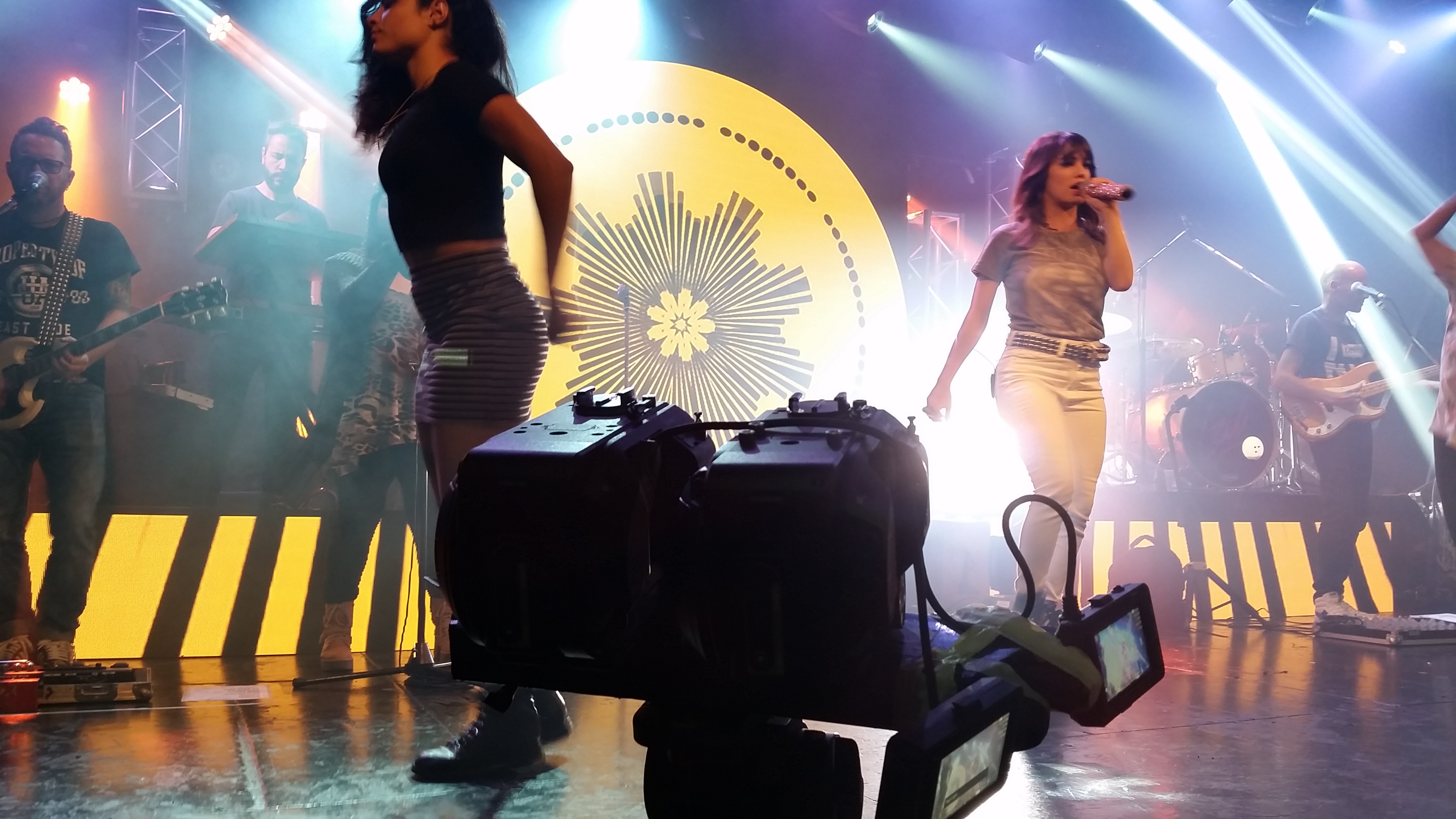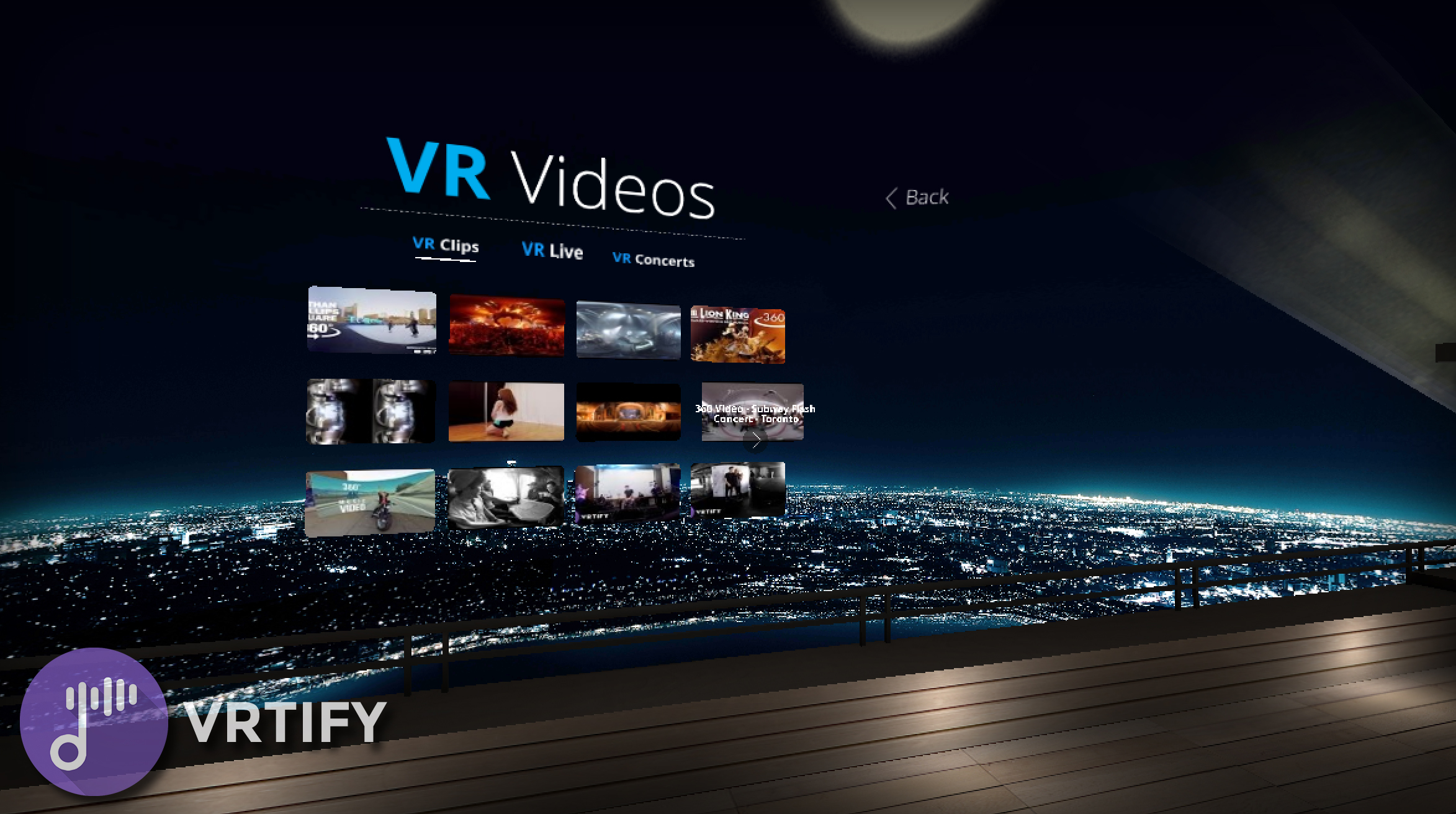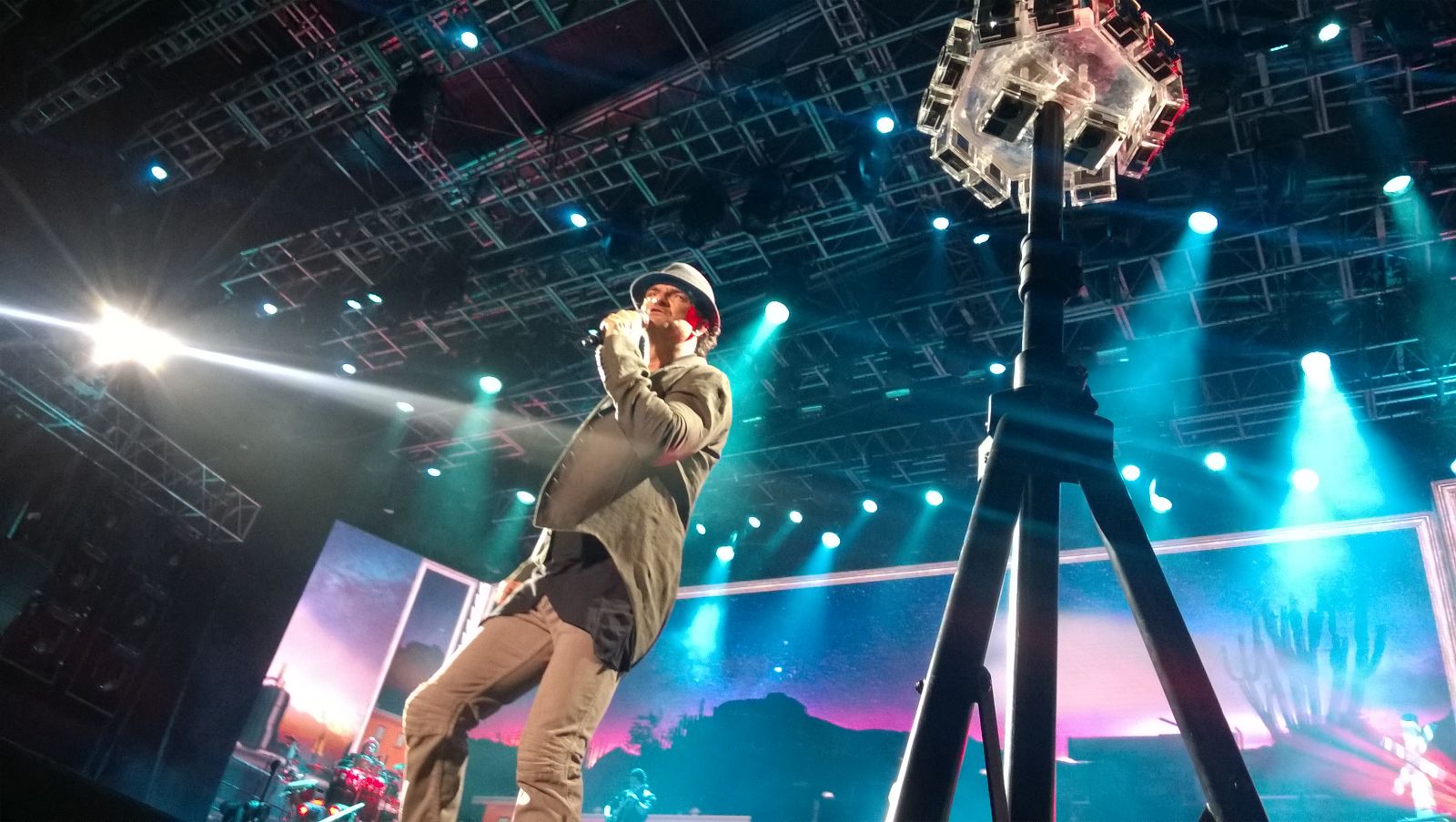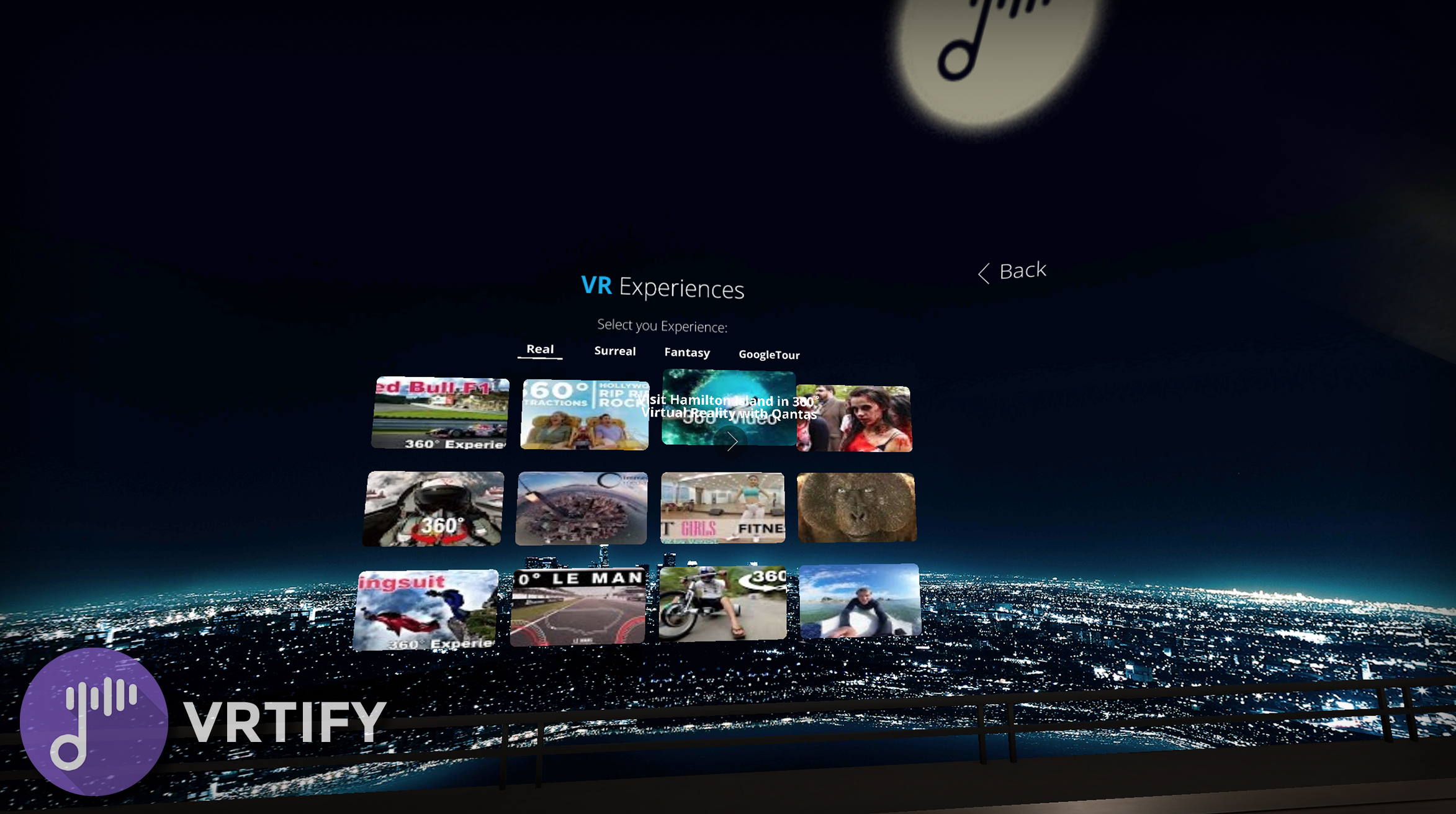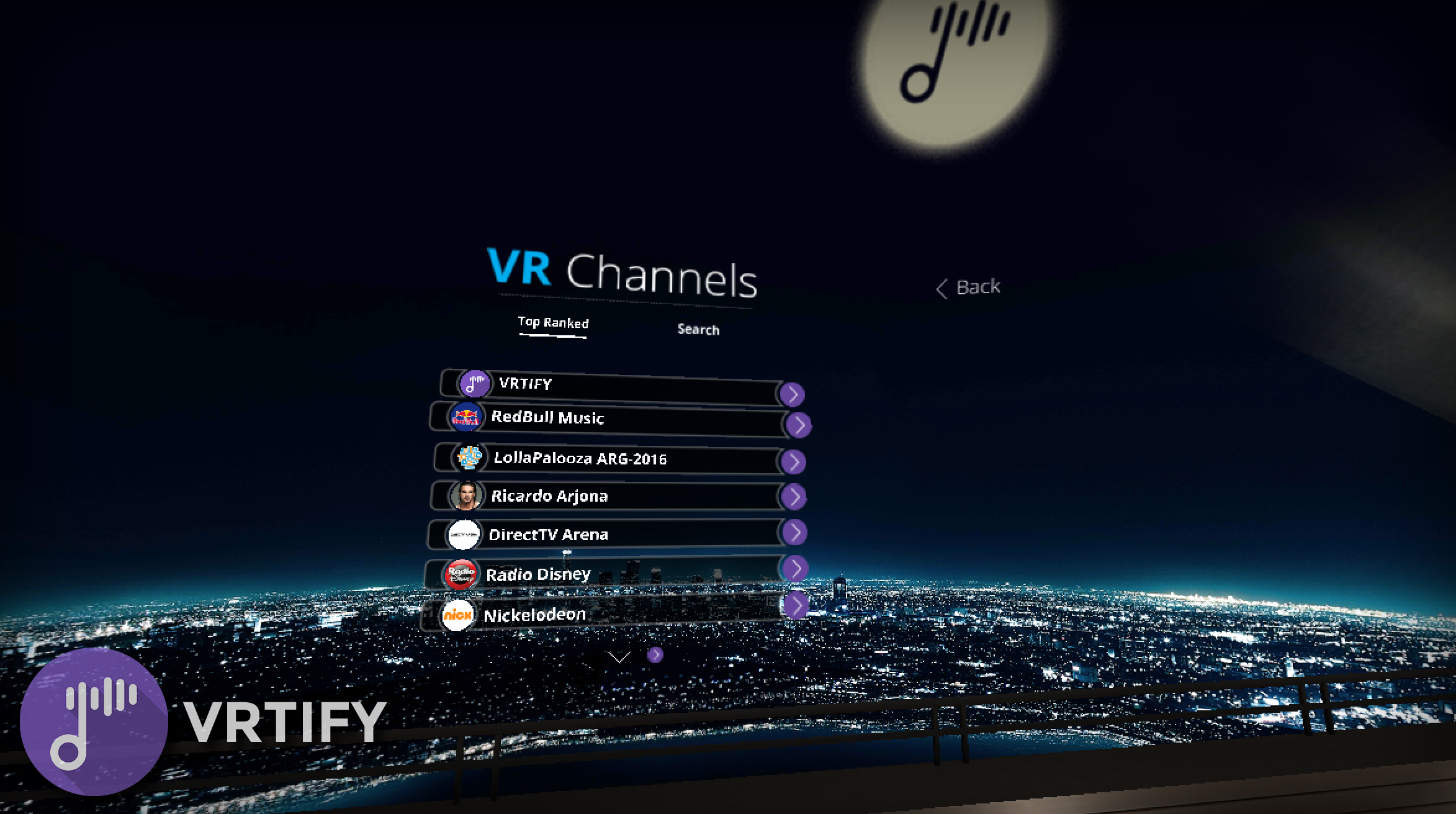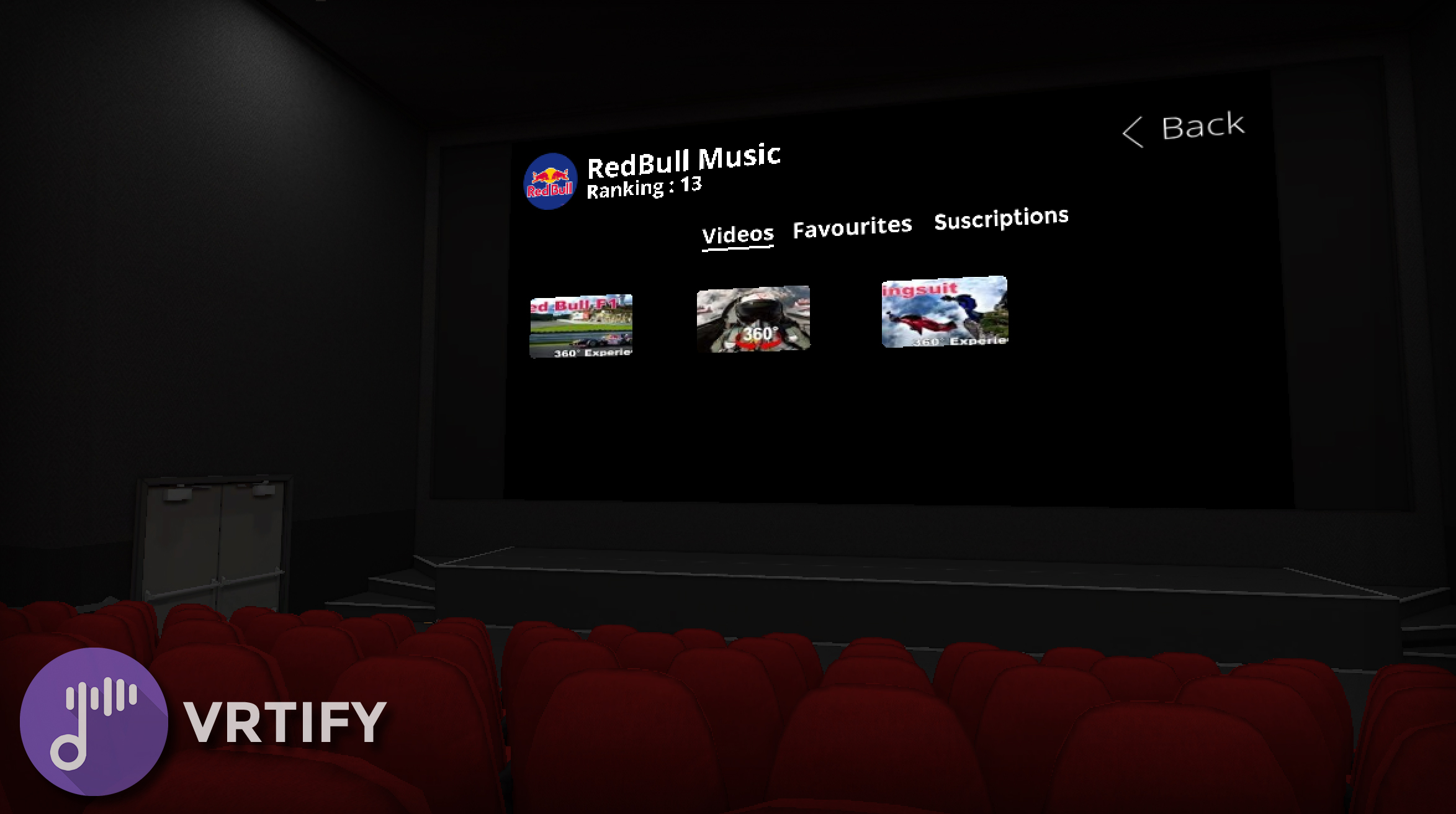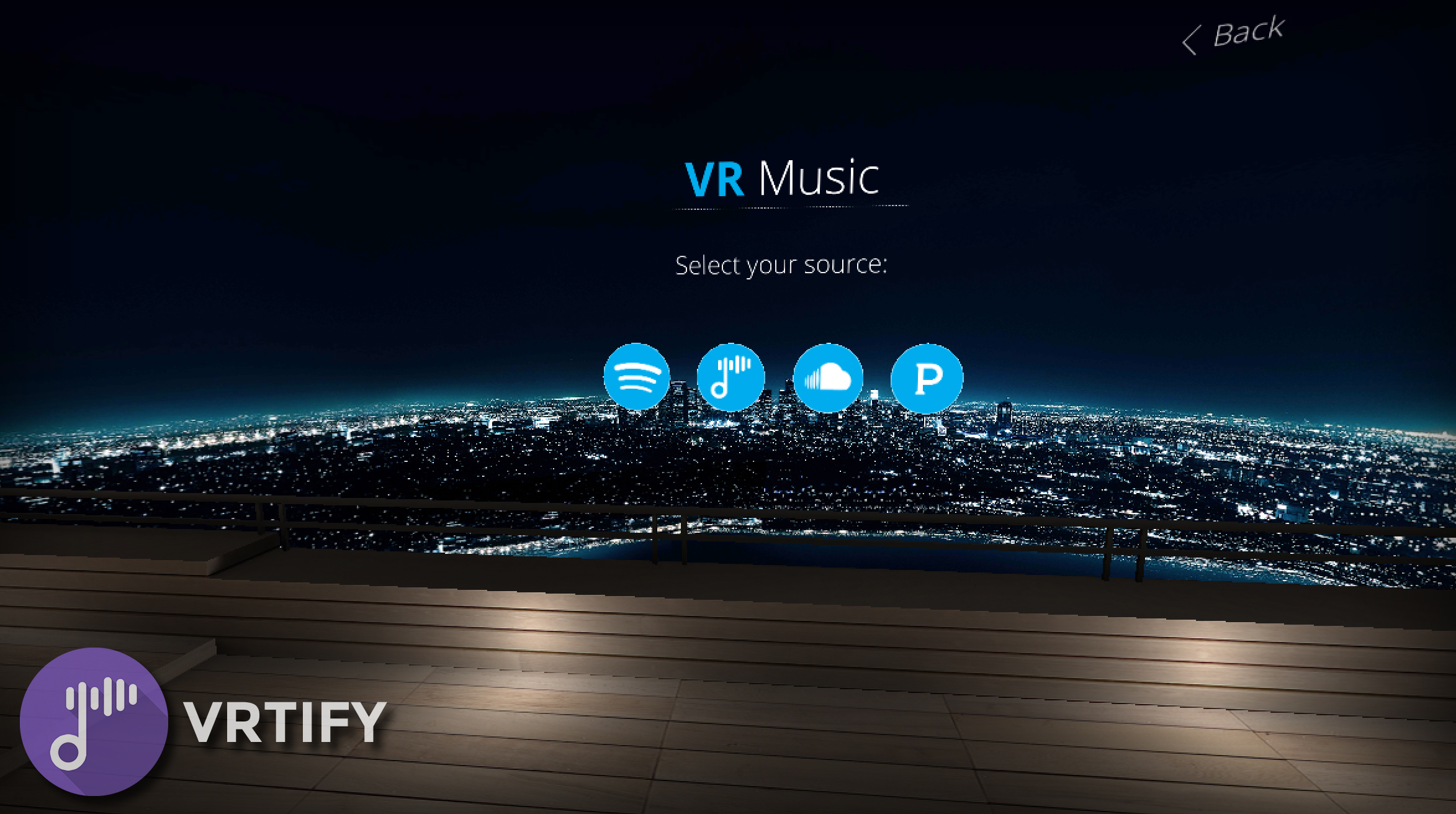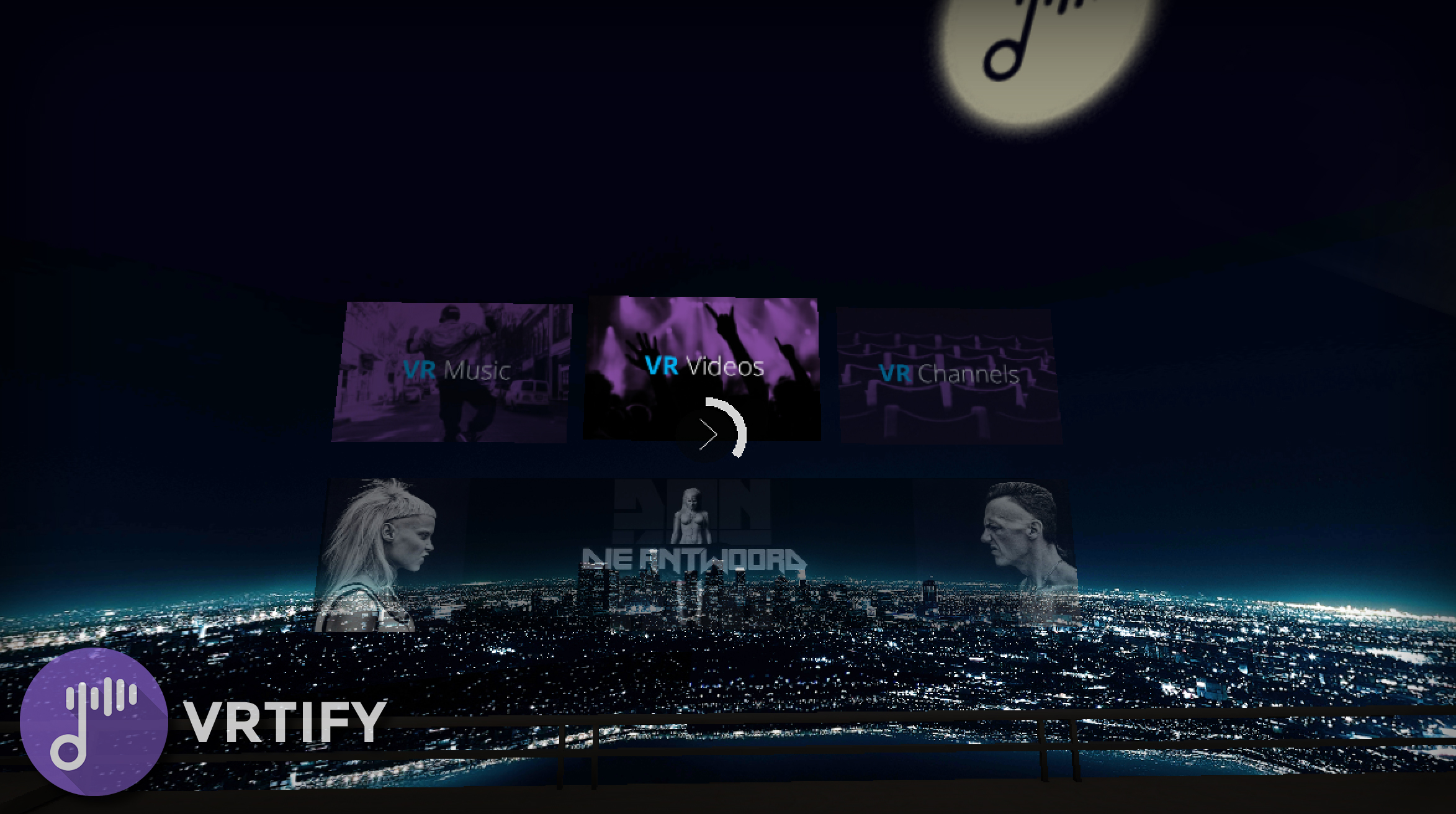“We are not trying to recreate the real experience,” VRTIFY chief executive Facundo Diaz said. “We are trying to create a new experience. We can create many new things that experience or interact with the musician using VR that are very different from the traditional way to enjoy a concert.”
VRTIFY offers concerts, clips and channels from bands including Coldplay, Mumford & Sons, Florence and the Machine, Sting, Twenty One Pilots, and Of Monsters and Men. It’s available or in beta on most current headsets, including PlayStation VR, Oculus Rift, HTC Vive, Samsung GearVR and Google Cardboard. It also offers the ability to share your own creations and lists with other users.
Viewers can choose where they want to watch from, for example: on the stage, in the audience, even backstage.
“Maybe you want to go to the stage and be right there with the artists, or maybe you think the crowd is getting crazy and you want to be right there with the crowd,” Diaz said. VRTIFY events frequently offer several vantage points, all in full HD 3D (not just 360 pans), including 3D sound.
Consumers Are More Interested In Music Than Games
VRTIFY aims to tap into the majority of VR users and non-users who say they’re interested in events and performances in VR. That number surprisingly beats many other media competing for VR attention, including gaming.
Greenlight Insights’ 2016 Virtual Reality Consumer Report, released this summer, polled more than 1200 people in the United States. The findings were intriguing: Gaming was actually sixth on the list at 61 percent, while virtually attending live events landed at No. 3 (with 67 percent.) When the responses were narrowed to “high tech spenders,” live events other than sports registered even more strongly, at 71 percent.
Diaz, a serial entrepreneur in tech with several successful companies, saw that potential five years ago. When he first saw demonstrations of virtual reality, he was hooked.
“The software, the cameras, not too many things were available then,” he said. “We created all the tools that we needed to make content in virtual reality. Our first project was related to gaming: 10-15 games in VR.”
After a move to Palo Alto three years ago, he decided to expand into music and other platforms.
“Nobody was in music. We decided to focus all of our effort in creating a platform the music industry could distribute their content and users could access their content,” he said. “The market is growing a lot. We are enjoying a lot what we are doing. Getting into the music industry is a challenge, but it’s very fun.”
Breaking Into The Music Business
VRTIFY got an assist from well-known music producer Billy Mann, who sits on the company’s board.
“Virtual reality [and] why it was important to me had nothing to do with the music industry. I have a son with autism, and we were talking about various learning and sensory experiences for him, and VR came up. That was the first i had ever really discussed it,” he said. But it didn’t take long for him to see the potential.
“I’m fascinated by technology and the music industry, some chunk of it out of fear, and out of just absolute curiosity and excitement,” he said. “I think that the toothpaste is out of the tube in so many respects when it comes to musical content and technology.”
He told a friend in venture capital that if an opportunity came up with virtual reality and music, he wanted to know. And so his partnership with VRTIFY was born.
“The market is growing a lot,” Diaz said. “Getting into the music industry is a challenge, but it’s very fun. It was easy to start to interact with musicians. We bring the technology, and they bring the creativity and the ideas. We don’t keep the rights of the content. We produce the concert for them and help them distribute it.”
A New Experience in VR For Music Fans
Diaz was delighted by musicians’ willingness to experiment with new technology. Mann said that’s been true all along, as musicians work to find new ways to connect with their audience.
“The one thing above all else that’s clear to the marketplace is that consumers are in charge. They want to experience things and they want to do it on their own terms, and frankly, why shouldn’t they?” he said. “The VR platform is just another wonderful step in the direction of more immersive musical experiences for people.”
Mann said he sees the service as an affordable, virtual extension to the traditional musical tour.
“You have one artist and a big world,” he said. “I like the idea that there can be a die-hard fan of Drake in Johannesburg, and even though he’s not going to tour there for a year and a half, there’s the ability for them to put on the $5 Cardboard and see him. To me, it is incredibly fun to think that somebody on the other side of the world have can that kind of 360 [degree], immersive experience with an artist that they love.
“You’re immersed in an environment that’s totally different than wherever you are. I love that idea for people who are huge music fans, and for people who want to see that experience.”
One of the key advantages of VR is the ability to take fans into places they wouldn’t normally get to see — backstage, in green rooms or when the artist is preparing for the concert.
“Being able to walk around the tour bus with the artist and have breakfast with the artist and talk about the songs with the artist – it’s a passport into worlds that you don’t get into any other way,” Mann said.
VRTIFY Leads An Increasingly Crowded Stage
Individual musical artists have made forays into VR; one good example is The Weeknd’s “The Hills” Remix featuring Eminem, which includes both 360 video and some virtual additions, or even Paul McCartney as well. Recent experiments by other big brands, including Google’s Bohemian Rhapsody VR experience last month, show the potential for music videos and other creative artwork based on music and CG in VR. That experiment was only available on Google Cardboard (or Samsung GearVR with an adapter app); VRTIFY is a few steps ahead.
“Music has never stayed static,” Mann said. “I’m a vinyl lover, but we all know that people listen to music on satellite radio in their car or on their phones or as MP3s. It’s another experience.”
Diaz agreed. “VR does not need to compete with traditional video or the real experience. We can create new ways to interact with the music. We can complement that, bringing new and different ways to experience the music.”
“VR is ambitious,” Mann said. “It’s more intimate. I think we’re at the front end of this new immersive content. I think that VR is going to develop into a really important platform for music and live performance. It’s such a rich well to draw from — I think the sky’s the limit.”
This article was written by Heather Newman, a freelance writer with work appearing in publications like The Rolling Stone/Glixel, Forbes, and VentureBeat. Follow her on Twitter: @Gbitses.

